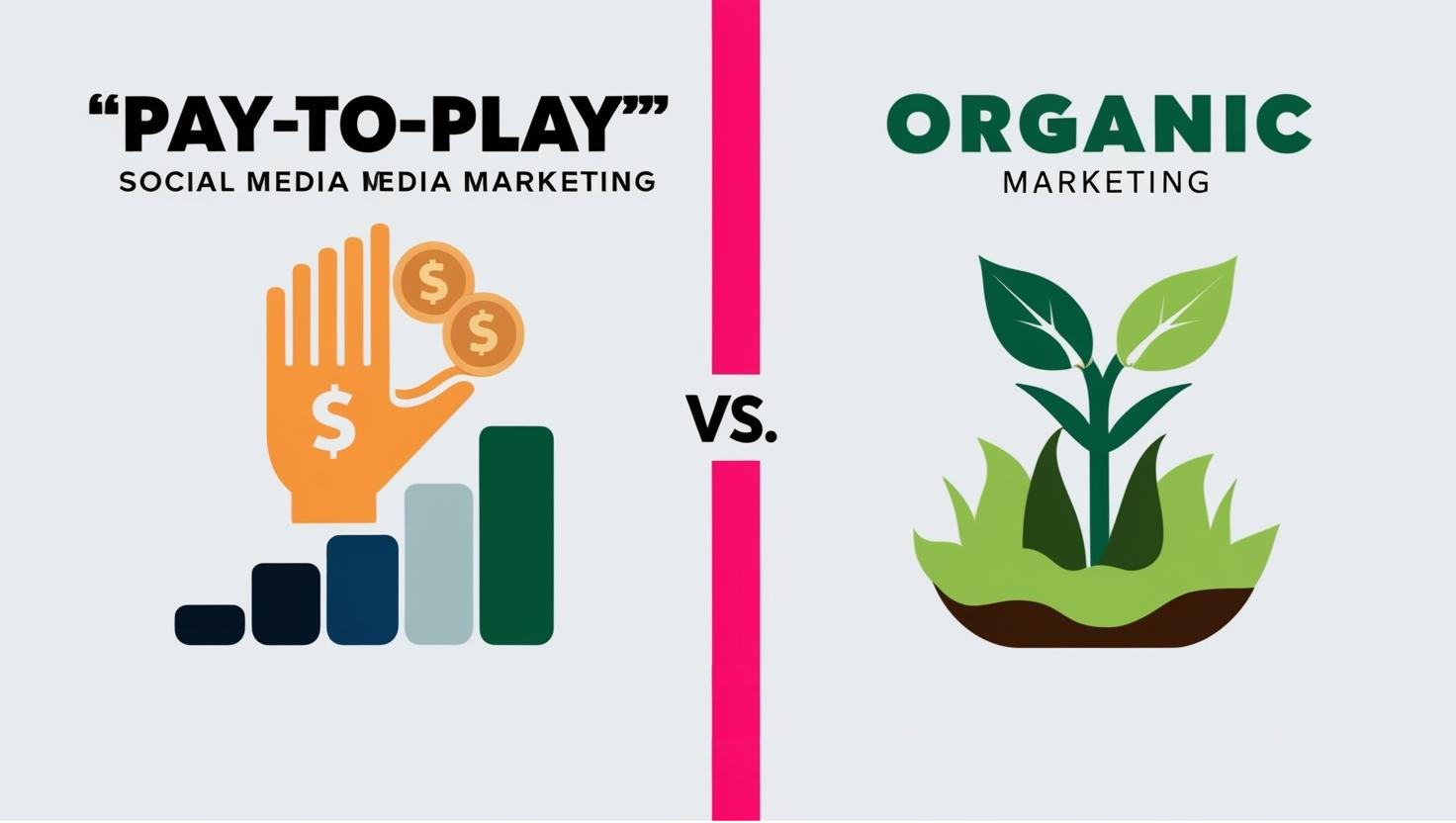Paid social media marketing is often called “pay to play” because platforms like Facebook, Instagram, LinkedIn, and TikTok prioritize paid content over organic reach. Here’s why:
- Declining Organic Reach – Social media algorithms limit the reach of organic (unpaid) posts, especially from businesses. Even if you have a large following, only a small percentage of your audience will see your content unless you boost it with paid promotions.
- Algorithm Prioritization – Platforms make money from ads, so they prioritize content from advertisers. Paid ads get prime placement in feeds, stories, and search results, making them more effective than organic posts.
- Better Targeting & ROI – Paid campaigns allow businesses to reach highly specific audiences based on demographics, interests, and behaviors. Organic reach can’t match the precision and scalability of paid targeting.
- Competitive Advantage – Since competitors are investing in paid ads, brands that don’t may struggle to compete for visibility and engagement.
Essentially, while organic content is still valuable for brand awareness and engagement, paid social media marketing is necessary to get consistent reach, lead generation, and sales—hence the “pay to play” nature.
How To Choose?
Choosing between organic reach and “pay to play” (paid advertising) isn’t strictly an either/or decision—they each serve different purposes. Here’s a breakdown to help you decide which (or what combination) might work best for your goals:
Organic Reach
Pros:
- Builds Community & Trust: Organic posts help nurture relationships, establish your brand’s personality, and create a loyal following over time.
- Cost-Effective: Aside from time and creative effort, organic reach doesn’t require a direct ad spend.
- Authenticity: Content shared organically can appear more genuine to your audience, contributing to long-term brand loyalty.
Cons:
- Limited & Unpredictable Reach: Algorithms on platforms like Facebook and Instagram have reduced organic reach over the years, making it harder to get in front of your audience without additional boosting.
- Slower Results: Growing an engaged audience organically takes time and consistent effort.
- Less Targeting: While you can tailor your content to your audience, you’re not reaching a highly segmented audience like you can with paid ads.
Paid Advertising (“Pay to Play”)
Pros:
- Immediate Results: Paid ads can generate quick visibility, drive traffic, and produce leads or sales almost immediately.
- Advanced Targeting: You can hone in on specific demographics, interests, and behaviors to reach exactly the audience you want.
- Measurable ROI: Advertising platforms offer robust analytics, allowing you to track performance and optimize campaigns in real time.
- Scalability: You can adjust your budget and reach as needed, which is especially useful for promotions, product launches, or seasonal campaigns.
Cons:
- Cost: You need a budget for ad spend, and costs can add up quickly—especially in competitive markets.
- Temporary Impact: Once you stop paying, your reach typically drops back down, whereas organic content can continue to engage over time.
- Learning Curve: Effective paid campaigns often require testing, optimization, and sometimes working with experts to get the best results.
The Ideal Approach: A Blend
Most successful social media strategies use a mix of both:
- Use Organic Content to Build Relationships: Share stories, behind-the-scenes content, and customer testimonials that build a narrative around your brand.
- Leverage Paid Ads to Amplify Key Messages: When you have a campaign, product launch, or specific goal, use paid ads to ensure your content reaches a larger and more targeted audience.
By integrating both approaches, you can create a robust social media presence that leverages the trust built through organic content while also taking advantage of the precision and speed of paid ads.

